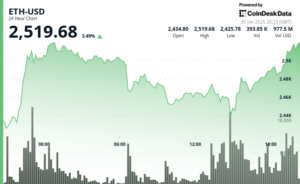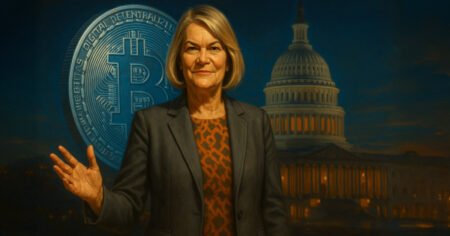Senate Banking Committee Unveils Framework for Digital Asset Regulation
On June 23, the Senate Banking Committee made significant strides in establishing a regulatory framework for digital assets by releasing a detailed seven-point strategy. Chaired by Senator Tim Scott, with input from Senators Cynthia Lummis, Thom Tillis, and Bill Hagerty, the proposal seeks to clarify the distinction between digital asset securities and commodities, providing much-needed guidance to an industry rife with ambiguity. While this framework sets an ambitious agenda for digital assets, it’s important to note that no formal bill draft has been issued as of now.
Bridging the Regulatory Gap
The primary focus of the Senate Banking Committee’s framework is to delineate the roles of existing regulatory bodies, opting to avoid the creation of a single regulatory authority specifically for cryptocurrency. This approach aims to streamline the registration process, enabling compliant digital asset issuers to attract capital through tailored exemptions suited for projects utilizing distributed ledger technology. By proposing regulations that recognize the differences between centralized firms and decentralized protocols, stakeholders hope to foster an environment that supports innovation while ensuring regulatory compliance.
The Need for Legislative Clarity
During the hearing of the Digital Assets Subcommittee, experts vehemently advocated for clear regulations to promote a stable market environment. Coinbase’s Vice President of Legal, Ryan VanGrack, articulated the gravity of the situation, noting that over 52 million Americans—approximately one in five adults—now own digital assets. He highlighted the risk posed by existing regulatory ambiguities, which can be exploited by malicious actors. Former Commodity Futures Trading Commission (CFTC) chairman Rostin Behnam echoed this sentiment, stressing that the non-security segment of the market remains without a structured regulatory framework, leaving it vulnerable to potential exploitation.
Consumer Protection Mechanisms
The framework underscores the importance of consumer protection through innovative regulatory measures. Proposed provisions include proactive registration for intermediaries, carefully calibrated capital and segregation requirements, and explicit bankruptcy protections for customer assets. Behnam emphasized that asset segregation is paramount for safeguarding user funds. There’s also a bipartisan proposal for an anti-money laundering initiative aimed at extending the Bank Secrecy Act to cover offshore entities dealing with U.S. users, thereby ensuring that fraud is deterred without suffocating compliant ventures.
Coordination Among Regulatory Bodies
To facilitate effective oversight, the framework advocates for better coordination among federal agencies, recommending mechanisms like safe-harbor pilots and no-action letters to prevent redundant examinations. This approach aligns with VanGrack’s assertion that the U.S. must avoid a fragmented regulatory landscape. Senator Bill Hagerty highlighted bipartisan momentum as evidenced by recent legislative activities, urging peers to maintain collaborative efforts despite prevailing political challenges.
Emphasizing Market Innovation
Witnesses during the hearing underscored the practical benefits of decisive legislation for households and the broader economy. Greg Xethalis of Multicoin Capital warned that delayed legislation would lead to European nations setting global regulatory standards, as was the case with internet commerce. He stressed the risks of falling behind in vital sectors like 5G technology and semiconductors. Senators prompted speakers to comment on the tangible advantages of a robust digital asset framework, which could include lower transaction costs, improved remittance speeds, and new avenues for credit access.
Next Steps Towards Draft Legislation
With the foundation laid, Senate staff are charged with translating the outlined principles into statutory language. This draft will propose that the Securities and Exchange Commission (SEC) oversee asset fundraising and secondary trading of securities tokens, while the CFTC will maintain jurisdiction over commodity tokens and derivative products. The draft will likely emphasize the importance of customer asset segregation and tailored exemptions for token sales. The looming completion of this market structure law coincides with similar proposed measures introduced by House Republicans earlier this year, indicating a developing consensus on digital asset regulation.
In conclusion, as the landscape of digital assets continues to evolve, the Senate Banking Committee’s framework provides a promising step forward in establishing a regulatory environment that balances innovation with consumer protection. Ensuring clear guidelines will not only benefit domestic stakeholders but also affirm the United States’ position as a leader in the increasingly important global digital asset market.

















